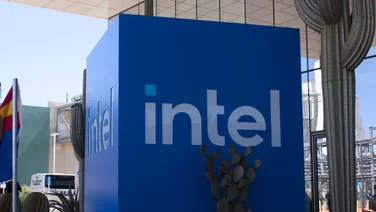To help us provide you with free impartial advice, we may earn a commission if you buy through links on our site. Learn more





AMOLED screens aren’t without controversy. Not only do they have much higher power demands than traditional IPS displays, they can also suffer from “burn in”. Keep the same picture on-screen for too long and a ghost image remains. So HP’s decision to introduce “the world’s first laptop with an AMOLED display” is a bold move (albeit not totally true, as Lenovo has previously released a 14in Yoga with an AMOLED display).
We got our hands on the new model at a pre-show event, and it’s a bold move in every sense of the word. We’re just not 100% convinced that its benefits make up for its downsides.
READ NEXT: The best laptops you can buy
HP Spectre x360 15 with AMOLED display review: Key specifications, price and release date
- Display: 15.6in AMOLED, resolution TBC
- Processor: 8th-Gen Intel Core i7
- Graphics: Nvidia GeForce MX150 or GTX 1050Ti with Max Q
- Storage: Up to 1TB PCIe SSD
- RAM: Up to 16GB DDR4
- Connectivity: 2 x Thunderbolt 3 USB-C, 1 x USB-C 3.1 Gen 1, 1 x HDMI
- Dimensions: 19.3 x 361 x 250mm (HWD)
- Weight: 2.2kg
- Audio: Bang & Olufsen quad speakers
- OS: Windows 10 Home
- UK price: TBC
- UK release: TBC
HP Spectre x360 15 with AMOLED display review: The display’s benefits
To say this laptop has a bright screen is like calling the sun a bit shiny. Colours and details look amazing, and because it reaches ridiculous levels of brightness it’s also easy to view outdoors. When you’re indoors, this should make watching movies on the Spectre x360 a joy. Often, detail goes missing in darker scenes with regular LCD displays but you’re unlikely to miss a beat with this laptop. As one HP spokesperson said during a pre-event briefing, “it makes watching Batman much easier”.
Viewing angles are superb, and the whole experience makes going back to a bog-standard IPS screen feel a little like you’ve put on your sunglasses inside.
HP Spectre x360 15 with AMOLED display review: The display’s drawbacks
HP has been pretty clear on why it’s made the move to AMOLED: consumers want it. But the reason it isn’t shouting about this move is that it knows the technology isn’t perfect.
Let’s start with battery life. While HP isn’t yet quoting figures, we know from talking to other vendors that switching from IPS to AMOLED can drastically cut stamina. In one example, we were told that it went from 14 hours to 9.5 hours.
We’re slightly less worried about the question of burn-in. In the old days, if you left the same image on-screen for any long period of time – the Windows taskbar, for instance – it would leave a permanent ghost image on AMOLED displays. These days, with the technology advancing all the time, that’s less of a problem. We’ve not encountered it on smartphones for a while now and, we’re told, that the new generation of AMOLED laptop screens are much better, too.





HP Spectre x360 15 with AMOLED display review: Early verdict
Indeed, with so many manufacturers now using AMOLED displays on their premium TVs and smartphones, it feels like the right time for the technology to begin to elbow out IPS as the display panel of choice amongst premium laptops.
But it’s not just the screen that’s great here. The design of the Spectre x360, which was already great, has actually been tweaked since our most recent review, back in June 2018, with new angled edges that house the USB-C port on one side and a recessed power button on the other. It’s also powerful, with up to six-core Intel Core i7 processors, GeForce MX150 graphics and up to 16GB of RAM and 1TB SSDs. A potent combination.
We don’t know UK pricing or availability for the Spectre x360 15 with AMOLED display, but if prices of existing models are anything to go by then you can expect to pay between £1,600 and £2,000. In truth, though, we think it will go even higher than that.






